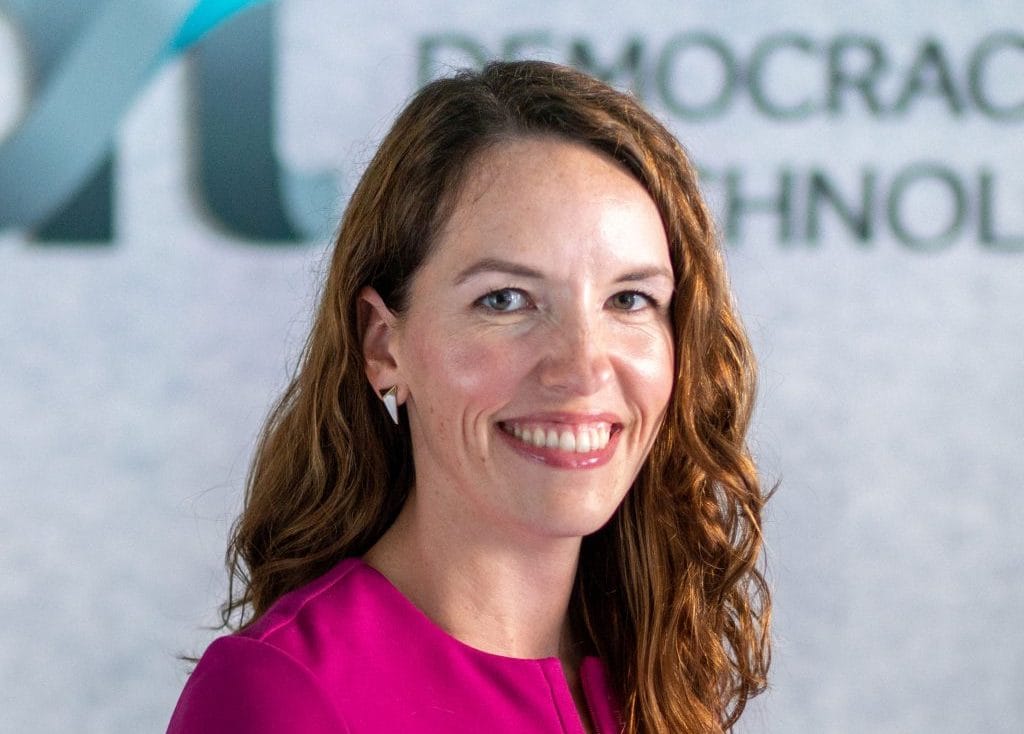Maintaining Student Privacy Amid Coronavirus Challenging, Says Center for Democracy and Technology
June 18, 2020 — The coronavirus pandemic and the resulting shift to primarily-online learning have placed students’ privacy in jeopardy, said participants in a Thursday webinar hosted by the Center for Democracy and Technology. The shift to online schooling in the wake of the pandemic has left mil
Elijah Labby

June 18, 2020 — The coronavirus pandemic and the resulting shift to primarily-online learning have placed students’ privacy in jeopardy, said participants in a Thursday webinar hosted by the Center for Democracy and Technology.
The shift to online schooling in the wake of the pandemic has left millions without access to educational resources. But even for those able to access their online learning, the transition presented a real danger, said Elizabeth Laird, senior fellow at CDT.
“What we care deeply about is… ensuring that any use of technology and data is in no way endangering or jeopardizing the wellbeing of students and their families,” Laird said.
Among the threats that unsuspecting students online could face were Zoombombing incidents and hacking, she said.
“They’re not only potential legal violations,” she said, “but have a direct and negative and potentially harmful impact on students, and that is the problem that we’re trying to solve.”
Laird laid out six steps that states and other organizations could employ to reduce the risk of such events.
The first, she said, was to “utilize existing data and technology governance structures.” She noted that governmental organizations could make better use of the tools they already have at their disposal.
Laird also said that states should provide teachers with privacy training and secure telelearning tools.
Erin Mote, executive director of InnovateEDU, said that these concerns were valid and that educators did not have “adequate training around how to configure permission levels, how to set up waiting rooms [and] how to mute and unmute students during discussion.”
Further, Laird said user agreements for learning technologies were outdated and did not take into account the changes caused by the coronavirus. She noted that the ability to delete their data is something that users need more than ever.
“One of the issues that we hear from students and their families is that they are concerned about students accumulating a permanent record or information being used out of context to potentially limit opportunities for them,” she said.
Marcia Bohannon, senior consultant at Point B Inc., said that tech companies lost the ability to delete data in their rush to get students online.
“Everybody was so conscious of getting the kids back to a learning environment,” she said. “Some of these processes and steps were seen as very onerous and legalistic… so they didn’t really want to follow that.”
Finally, Laird said that internet equity and the availability of access to Americans of all backgrounds was a modern imperative.
She noted that while large numbers of children were unconnected to their classrooms due to an inability to afford broadband or the devices that would make telelearning possible, issues of access for disabled children were also pertinent.
“The first step today is just, know what you’re dealing with,” she said. “Understand what the level of access to devices and internet is, as well as the different kinds of needs that your students have, and [be] thoughtful and deliberate about that throughout the process.”
Bohannon added that in her home state of Colorado, the virus had highlighted widespread access issues.
“We’ve still got over 50 thousand students that we have not been able to identify actually where they are, because the families don’t have internet access,” she said. “They can’t pay for it. Or they may not have devices. Somewhere in that supply chain of getting internet to the student in the home, someplace… it’s broken.”









Member discussion